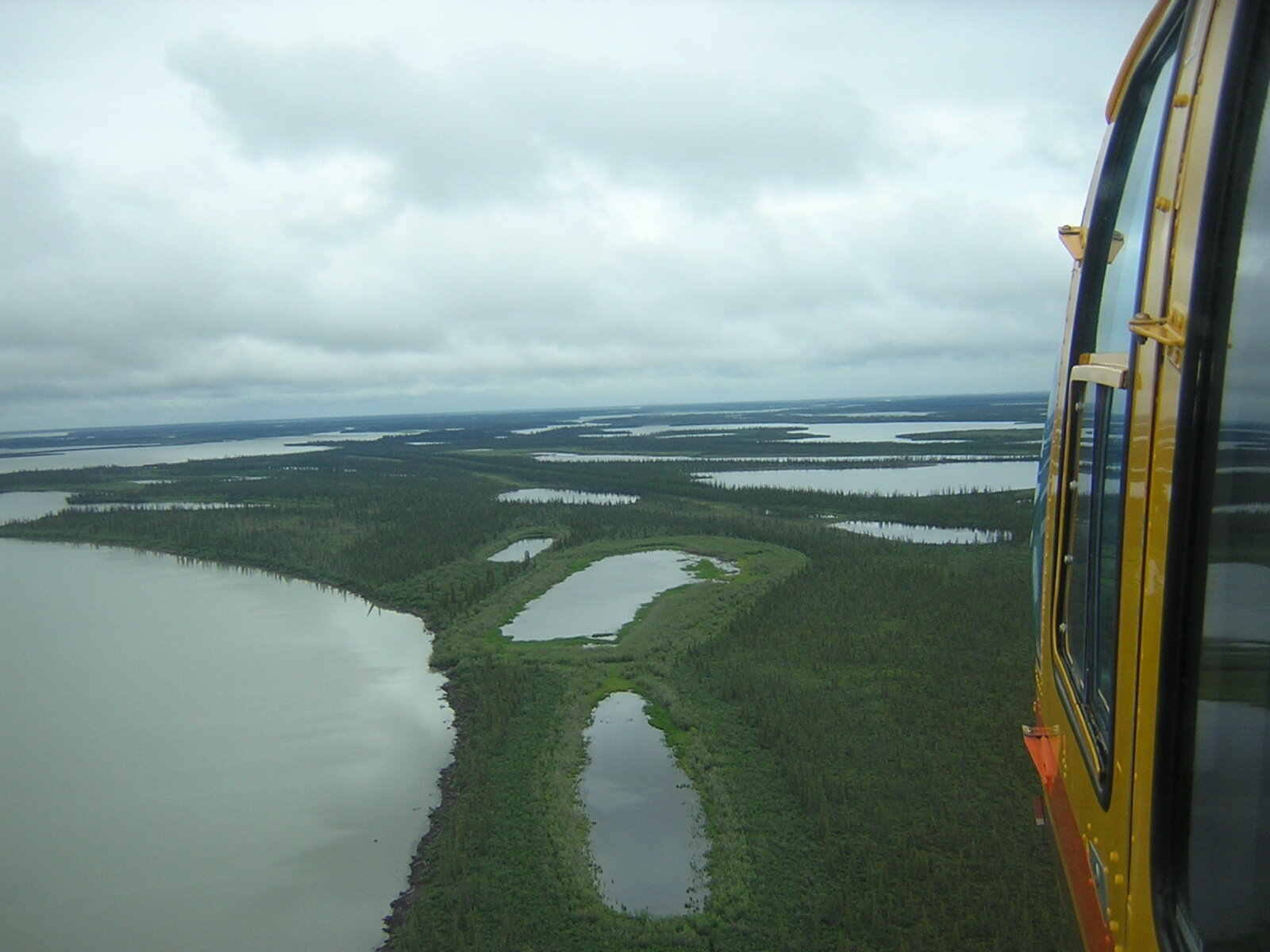
Effect of Seismic Airguns on Fishes
Mackenzie River region in northern Canada
Seismic airguns are used for exploration for off-shore gas and oil. They produce impulsive sounds of high intensity. Gisiner (2016) describes airguns and their sounds in Acoustics Today.
The concern that exposure to airgun sounds can harm fishes and other aquatic life. Our lab has been involved in a number of studies that have examined potential effects of airguns. These are outlined in the three sections below.
Effects of seismic airguns on ears of pink snapper
Our first study, done with Rob McCauley and Jayne Fewtrell in Perth Australia, examined the long-term effects of seismic exposure in pink snapper. We found some damage to regions of the saccule (one of the end organs of the inner ear). The damage appears to have been long-lasting. For reasons we cannot yet understand, this study is the only one that has been done that found damage to the inner ear of fishes as a result of seismic exposure.
(McCauley, R.D., Fewtrell, J., and Popper, A.N. (2003). High intensity anthropogenic sound damages fish ears. J. Acoust. Soc. Am. 113:638-642.) (download publication)
This figure shows hair cell damage in different parts of the saccular sensory epithelium. The holes represent locations where sensory cells had been.
Effects of Seismic Airguns on Fishes of the Mackenzie Delta (Canada)
We were invited by the Canadian Department of Fisheries and Oceans to examine potential effects of a seismic study in the Mackenzie River Delta in Norther Canada on local species. The study site was. in the town of Inuvik, the northern end of the Dempster Highway.
Airgun blast used in the study
The experiment involved placing different local fish species in a cage and then exposing them to several blasts from a seismic airgun off shore. After exposure, fish were moved to the lab where their hearing was tested using auditory brainstem response (ABR). We compared animals exposed to sound to controls. Hearing was also tested 18-24 hour post exposure. Fish were also examined for tissue damage.
Popper, A. N., Smith, M. E., Cott, P. A., Hanna, B. W., MacGillivray, A, O, Austin, M. E, Mann, D. A. (2005). Effects of exposure to seismic airgun use on hearing of three fish species. J. Acoust. Soc. Am., 117:3958-3971. (download publication)
Results for adult northern pike.
Results shown here are for northern pike for hearing change immediately after exposure and then 24 hours later. In both cases. the hearing during the test is compared to that of controls. Thus, a threshold shift of 10 dB means that the hearing was 10 dB poorer than controls, indicating a threshold shift as a result of exposure. Note that hearing returned to about normal after 24 hours
Scanning electron micrographs of the sensory surface of the saccule of a lake chub exposed to seismic signals.
We also examined the ears of the exposed animals and found no damage to any of the tissue.
Song, J., Mann, D. A., Cott, P. A., Hanna, B. W., and Popper, A. N. (2008). The inner ears of northern Canadian freshwater fishes following exposure to seismic air gun sounds. J. Acoust. Soc. Am., 124: 1360-1366. (download publication)
We also examined hearing in a larger number of species while in Inuvik, but without exposure to seismic blasts.
Mann, D. A., Cott, P. A., Hanna, B. W., and Popper, A. N. (2007). Hearing in eight species of northern Canadian freshwater fishes: implications for seismic surveys. J. Fish. Biol., 70:109-120.
Effects of Airguns on Lake Sturgeon and Paddlefish
We had the opportunity to examine the effects of single airgun blasts on two very important species, lake sturgeon and paddlefish. We used single blasts since that is the methodology in the US. In these seismic studies, an airgun is moved from location to location (separated by perhaps several hundred meters) on land and in water to explore for oil and gas over large regions. Our study was done in Lake Sakakawea in North Dakota.. The study is reported in: Popper, A. N., Gross, J. A., Carlson, Thomas J., Skalski, John, Young, John V., Hawkins, Anthony D., Zeddies, David (2016) Effects of exposure to the sounds from seismic airguns on pallid sturgeon and paddlefish. PLoS ONE 11(8): e0159486.
Five cages were spaced at various distances from the barge which housed the seismic airgun.
The Approach
Fish were put into cages at different distances from the seismic blast. The goal was to develop a dose-response curve for exposure to different levels of airgun sounds. After the exposure, fish were held for seven days and then necropsied to determine if there was any tissue damage. The methodology was very similar to that used in my lab for our studies of the effects of pile driving on fishes.
This illustrates the signal from the small seismic airgun array as recorded by a hydrophone on the test range.
Results
Experimental fish were in cages as close as 1 to 3 m from the guns where peak negative sound pressure levels reached 231 dB re 1 μPa peak and 205 dB SEL. Additional cages were placed at greater distances in an attempt to develop a dose-response relationship. Results showed no damage, as compared to controls either externally or internally for fish at any distance from the source. The results lead to the suggestion that for these two species, and for a single seismic blast, there is no physical effects. The potential impact on behavior could not be assessed in caged animals.





